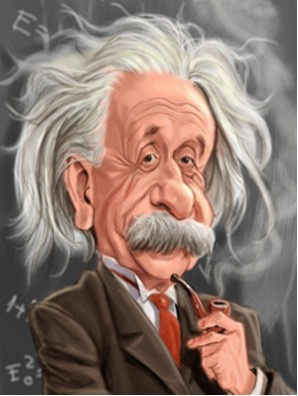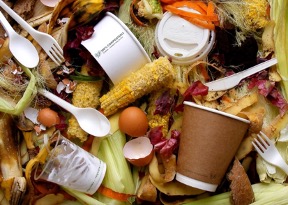 |
This page was last updated 9/24/25
|
|
|
|
|

Gum disease may cause Alzheimer’s Disease
By Mary Joyce, website editor
Jan Potempa, PhD. DSc, and his research team at the University of Louisville, have found gum disease (Porphyromonas gingivalis) in the brains of deceased Alzheimer’s patients.
This bacterium is well known for causing infections in the mouth, but when it makes it to the brain, it secretes toxic proteins that can create amyloid plaque – the culprit long associated with Alzheimer’s Disease.
You can learn more about the research in this ScienceAlert article published on September 8, 2025: https://www.sciencealert.com/the-cause-of-alzheimers-could-be-coming-from-within-your-mouth |

How to restore smell & taste impaired by COVID
An estimated 60% of patients infected in 2021 with COVID, lost some ability to taste and smell, according to an article in Yale Medicine. Usually, the losses were transient, but 25% of those individuals didn’t experience a full recovery.
A possible method to restore a person’s taste and smell has been published by several universities. Here is the method published by the UNC School of Medicine:
Smell retraining may assist with recovery
For smell retraining there are 4 essential oils that are used to assist in possibly restoring sense of smell. The essential oils are: rose, citronella (citrus or lemon), eucalyptus (menthol), and cinnamon.
In order to perform smell retraining, you should smell each essential oil twice a day for 6 weeks. Steps are as follows:
- Place a few drops of the essential oil on a cotton ball or pad and let it sit for a minute or two.
- Bring the pad within an inch of your nose and inhale through your nose slowly and naturally. Visualize what you’re trying to smell, either by looking at a picture or imagining with your eyes closed.
- Move the pad away, and then repeat several times with the same oil.
- Repeat this process with each essential oil taking a few minute break between each separate oil.
Try not to get discouraged. You may not smell anything at first, but that is ok. It may take time before you begin to smell anything. |
 |
Sniffing menthol impacts memory
The following information is very encouraging for those with Alzheimer’s disease and those with memory concerns. It is from two publications. The first is an excerpt from a Medical News Today article. Similar information was published by Neuroscience News, Science Alert, Science Direct and the National Institutes of Health.
The second excerpt is from a SciTechDaily article about memory research results from a university in Spain.
The highest percent of menthol I’ve found in OTC products is 16 percent. By contrast, Vicks VapoRub only has 2.6% menthol. Essential peppermint oil is extremely high in menthol and toxic unless greatly diluted. – The editor |
|
Medical News Today: According to a recent study in mouse models, published in Frontiers in Immunology, repetitive brief exposure to menthol can impact the immune system and prevent the cognitive decline that occurs among individuals with Alzheimer’s disease.
Researchers found that when mice smelled this substance, the level of interleukin-1-beta decreased. This protein is associated with the inflammatory response.
Additionally, by blocking this protein with a drug used to treat autoimmune conditions, researchers were able to boost cognitive ability in the mice with Alzheimer’s-like symptoms.
These findings illustrate the ability of odors and immune modulators to potentially treat this neurodegenerative disease.
“The study is interesting in that it brings to light the fact that, through the olfactory (smell) pathways, we can modulate the brain. We can effect a positive change on the brain through smell and smell alone.”
Dr. Brett Osborn, chief of neurosurgery at
St. Mary’s Medical Center, West Palm Beach, Florida
SciTechDaily: Scientists from Cima University of Navarra in Spain have demonstrated through experiments on animal models of Alzheimer’s disease that menthol inhalation enhances cognitive performance. Their research indicated that frequent, brief exposure to this substance can adjust the immune response and prevent the typical cognitive decline associated with this neurodegenerative disorder.
“We have focused on the olfactory system’s role in the immune and central nervous systems, and we have confirmed that menthol is an immunostimulatory odor in animal models. But, surprisingly, we observed that short exposures to this substance for six months prevented cognitive decline in the mice with Alzheimer’s and, what is most interesting, also improved the cognitive ability of healthy young mice.”
Dr. Juan José Lasarte, director of the Immunology at
Cima University and principal author of the investigation |

Brain tumors often caused by cell phones
By Mary Joyce, website editor
The majority of people are right-handed and hold their cell phone to their right ear. That’s the side of the head where most brain cancers develop.
According to the Brain Tumour Research Center in the UK:
“More children and adults under the age of 40
die of a brain tumour than from any other cancer.”
Three independent, case-controlled studies have shown that long-term use of cell phones increases the risk for glioma (brain) cancer, according to Dr. Lennart Hardell, professor in oncology and cancer epidemiology at the University Hospital in Orebro, Sweden.
These studies included data from 13 nations and show that after 10 years of wireless phone use, the risk of glioma cancer doubles; after 25 years, the brain cancer risk triples.
The researchers recommend ● Do not keep your cell phone next to your body. If you do keep it in your pocket, set it on airplane mode. ● Keep phone 12-15 inches away from your body when texting. ● At night, keep the phone on the other side of the room or set it on airplane mode.
  
Rozelle Vanda Wesley and Scott Hollister, Biomedical Engineering professors at
Georgia Tech, and the department’s new 3D-printed heart valve
Brand-new 3D-printed heart valve
By Mary Joyce, website editor
Georgia Technological University announced on February 11, 2025 that researchers in its Department of Biomedical Engineering “have created a 3D-printed heart valve made of bioresorbable materials and designed to fit an individual patient’s unique anatomy. Once implanted, the valves will be absorbed by the body and replaced by new tissue that will perform the function that the device once served.”
“We are moving away from using animal tissue devices that don’t last and aren’t sustainable, and into a new era where a heart valve can regenerate inside the patient,” says Rozelle Vanda Wesley Professor of Biomedical Engineering at Georgia Technological University.
This new 3D-printed heart valve is especially important for children with faulty heart valves according to Scott Hollister who’s also a professor in the university’s Biomedical Engineering Department.
“In pediatrics, one of the biggest challenges is that kids grow, and their heart valves change size over time,” says Hollister. “Because of this, children must undergo multiple surgeries to repair their valves as they grow. With this new technology, the patient can potentially grow new valve tissue and not have to worry about multiple valve replacements in the future.”
 
Eleven-year-old Aissam Dam and Dr. John Germiller
Boy born deaf now hears thanks to gene therapy
By Mary Joyce, website editor
Since his birth, 11-year-old Aissam Dam never heard a thing, not even a shout. He only could communicate with gestures. Then through a series of miracles, the Moroccan-born boy ended up at the Children’s Hospital of Philadelphia in October 2024 where he underwent gene therapy. Then on January 21, 2025, the hospital announced there was measurable improvement in the boy’s hearing.
"What we have really accomplished is exciting because it's the first time hearing has been restored in a child — really in a human being — for a hereditary type of hearing loss," says Dr. John Germiller of the Children's Hospital of Philadelphia.
"The idea here is to replace a defective gene that a child is born with, restore that gene to the inner ear by literally injecting it into the inner ear," Germiller says. "It's a surgical procedure to do that, but it's exciting because if we can get the gene back in and get it functioning.”
This is wonderful news because there are about 34 million children in the world who are deaf or have hearing loss. Sixty percent of those cases are caused by a defective gene.
According to the Mayo Clinic, genes contain DNA which control much of the body's form and function. Genes that don't work properly can cause disease. So, gene therapy aims to fix a faulty gene or replace it with a healthy gene.
Gene therapy trials already are showing promise in the treatment of a wide range of other diseases such as ● cancer ● heart disease ● diabetes ● cystic fibrosis ● hemophilia ● sickle cell disease ● AIDS.

Encourage restaurants to help save our oceans
By Mary Joyce, website editor
NOTE: This information was posted on our Facebook pages for Earth Day but it’s worth posting any day of the year.
If we all stop using plastic straws and utensils will that really un-strangle our oceans? Not likely. It can take 1000 years to breakdown a fork that is labeled “biodegradable.”
But there is another solution: COMPOSTABLE PRODUCTS and packaging that will decompose along with food garbage. Below is a list of a few of many companies that make compostable products. Consider sharing this information with restaurant owners in your town and sending it to corporate headquarters for national chain restaurants.
● Good Start Packaging
www.goodstartpackaging.com
● Green Paper Products
www.greenpaperproducts.com
● Eco-Products
www.ecoproductsstore.com
● World Centric
www.worldcentric.com
● Tayst Coffee Roaster (Bio-degradable K-cups)
www.tayst.com
|
|
|
|
